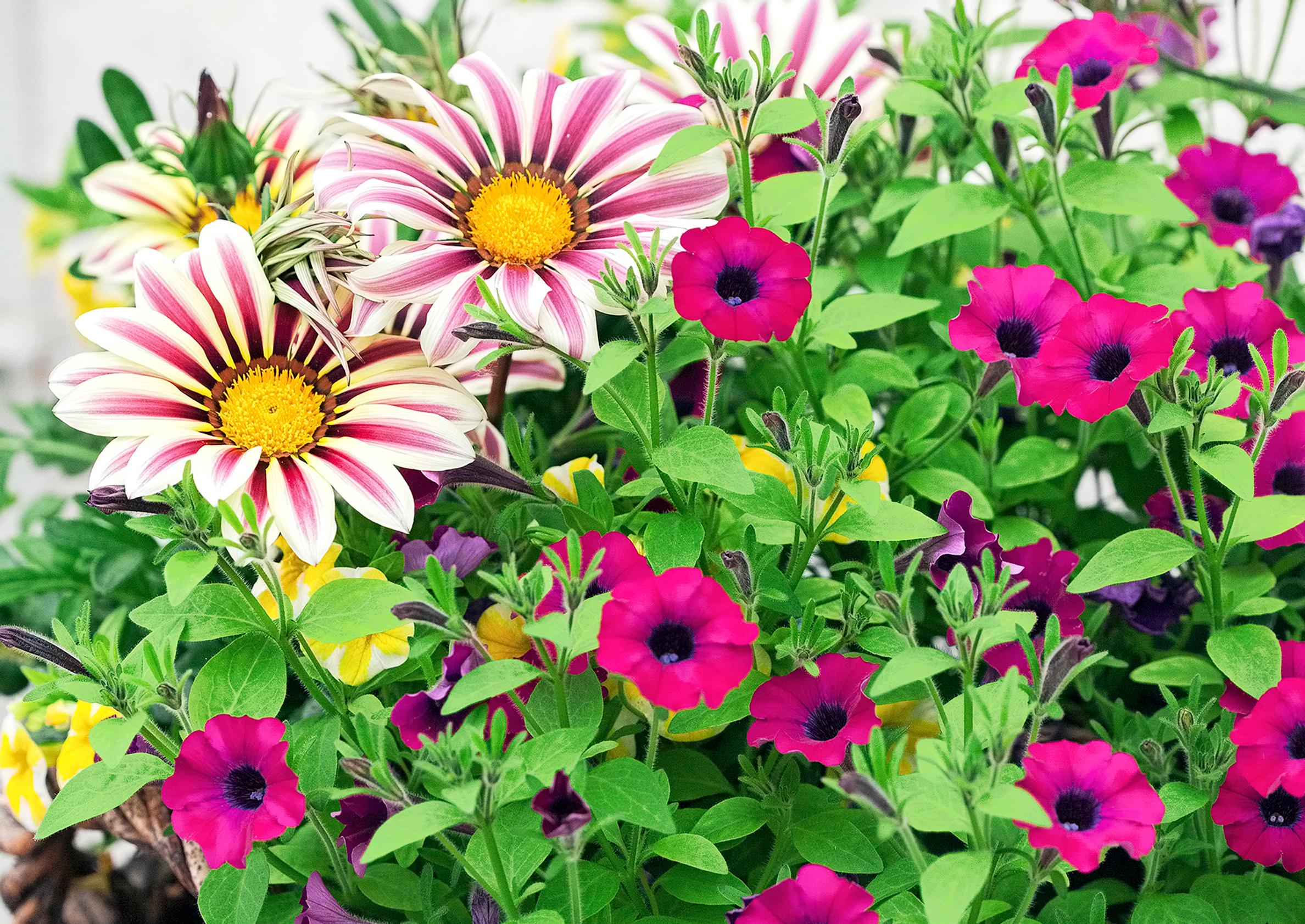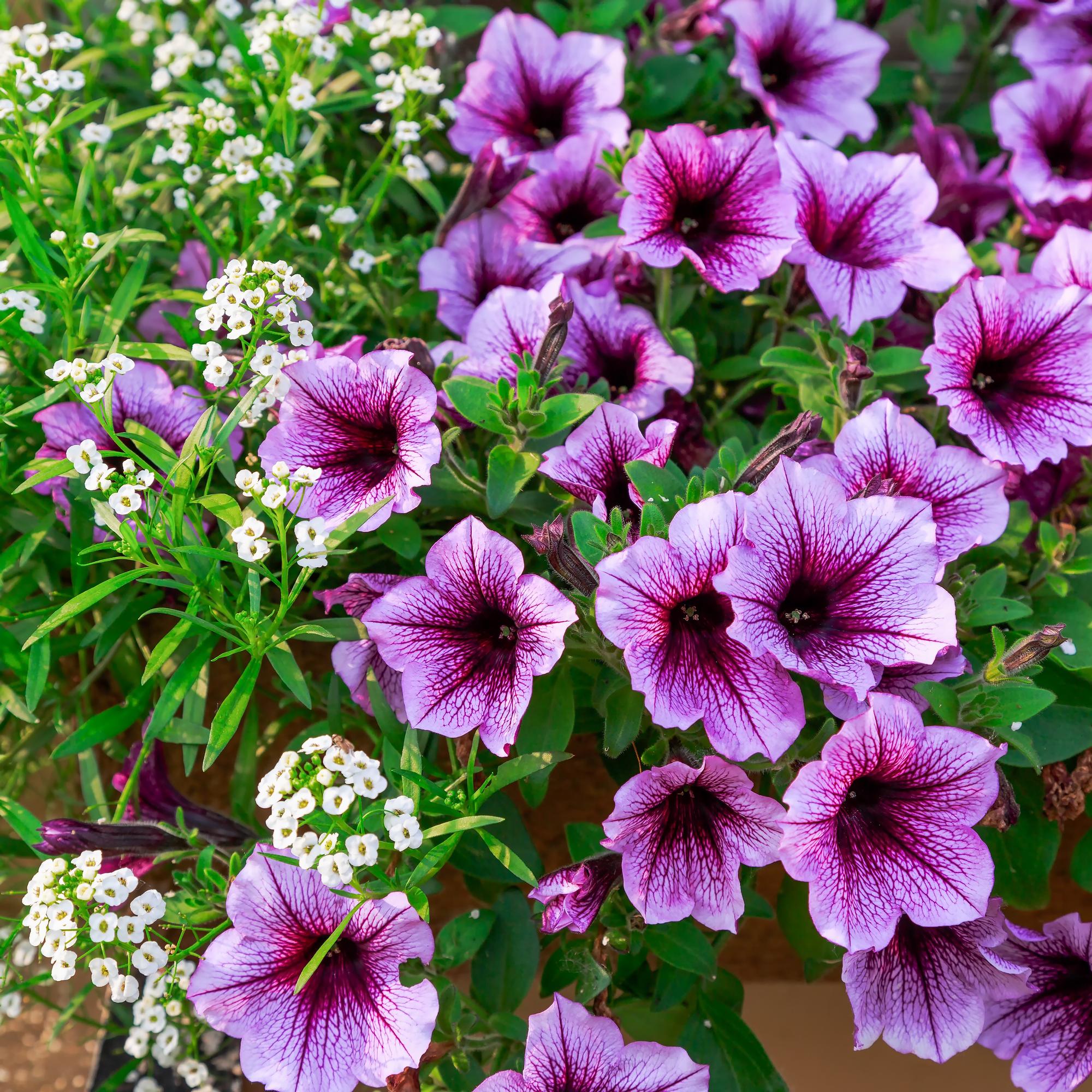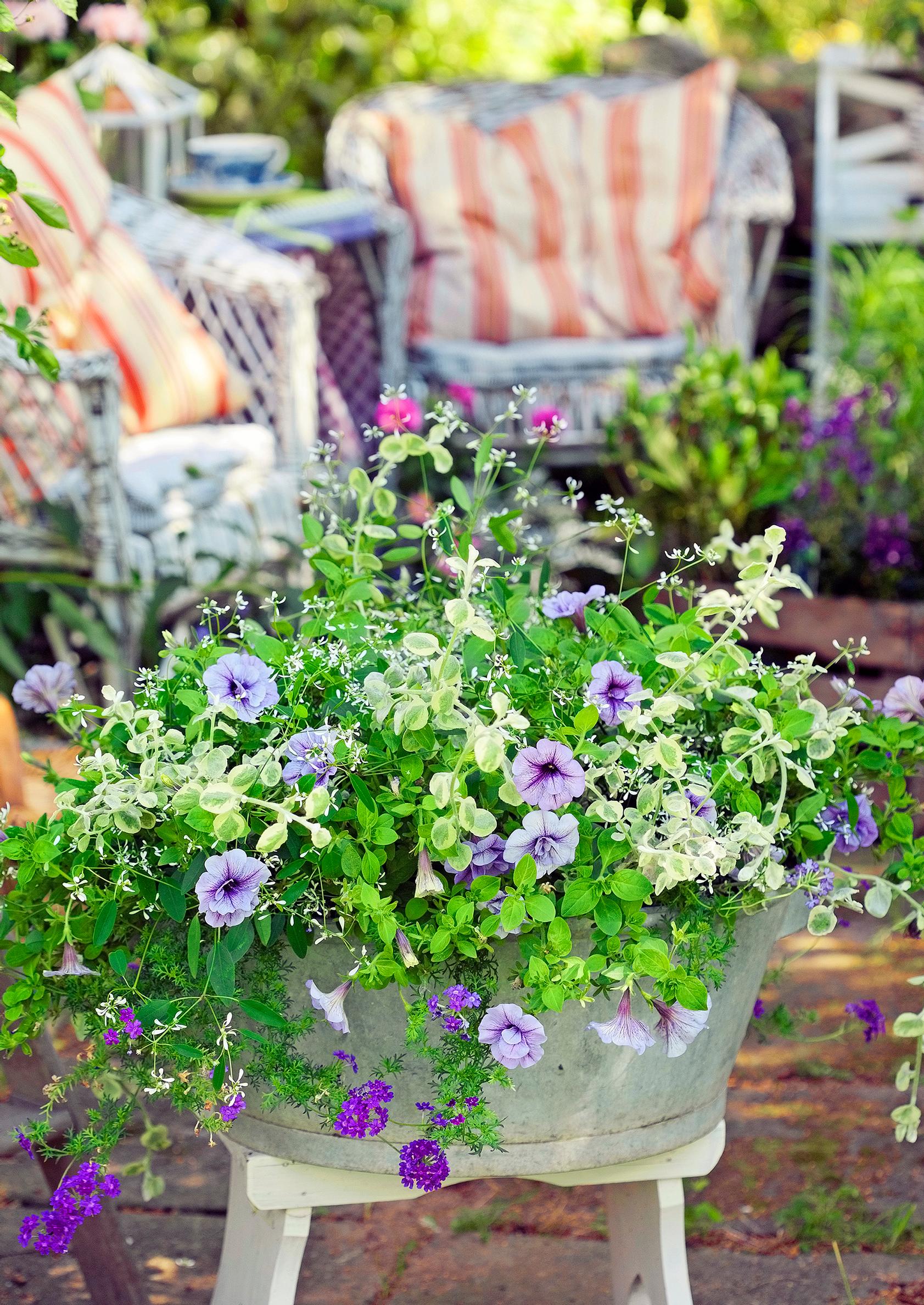
How to care for petunias? Check out our tips!
Petunias need regular watering and fertilizing to keep blooming all summer. With the right care, they’ll reward you with a spectacular and colorful display of blooms.
Petunias are native to South America, and they thrive in light and warmth. New varieties impress not just with their array of colors but also with how effortless they are to care for—for many, removing spent flowers is already a thing of the past.
How to care for petunias? Check out the tips:
Growing location
Bright, sunny, or semi-shaded. Petunias need at least 5–6 hours of sunlight per day. They bloom more abundantly in full sun than in partial shade. The large-flowered petunias don’t handle rain well, so it’s best to keep them under an eave or other covered spot. Trailing petunias are great for early spring container plantings because they can handle cold weather relatively well.
Growing medium
Choose a well-draining potting mix that you can enrich with compost or well-rotted horse manure if you like.
Growing petunias from seed
Petunia seeds are tiny, making it impossible to sow them individually. Typically, they’re broadcast in a tray and then the seedlings are transplanted into pots. They germinate best in bright light.
Petunias are usually started indoors in March. Don’t cover the seeds after sowing. Pinching back the tops helps produce bushier growth but slightly delays flowering.

Petunia watering schedule and fertilizing
Petunias and trailing petunias need plenty of nutrients to grow and flower continuously. Feed them once a week with a liquid fertilizer or choose a slow-release option. They prefer an even watering schedule: don’t let the soil dry out entirely, and avoid leaving them waterlogged. Some varieties require removing faded flowers.
Trailing petunias can handle the soil drying out a bit. Water Callie-series varieties only when the top of the soil is dry. You don’t need to remove old blooms.
Overwintering petunias indoors
Overwintering petunias indoors can be successful if you provide a bright, cool spot (1–10 degrees Celsius). As days get shorter in fall, budding stops. The plant becomes quite scraggly over winter. That’s not a problem: come spring, when there’s more light, simply trim the shoots down so the plant can regrow. Throughout winter, water sparingly, just enough to keep the soil from drying out. A petunia kept too wet is prone to rotting.



